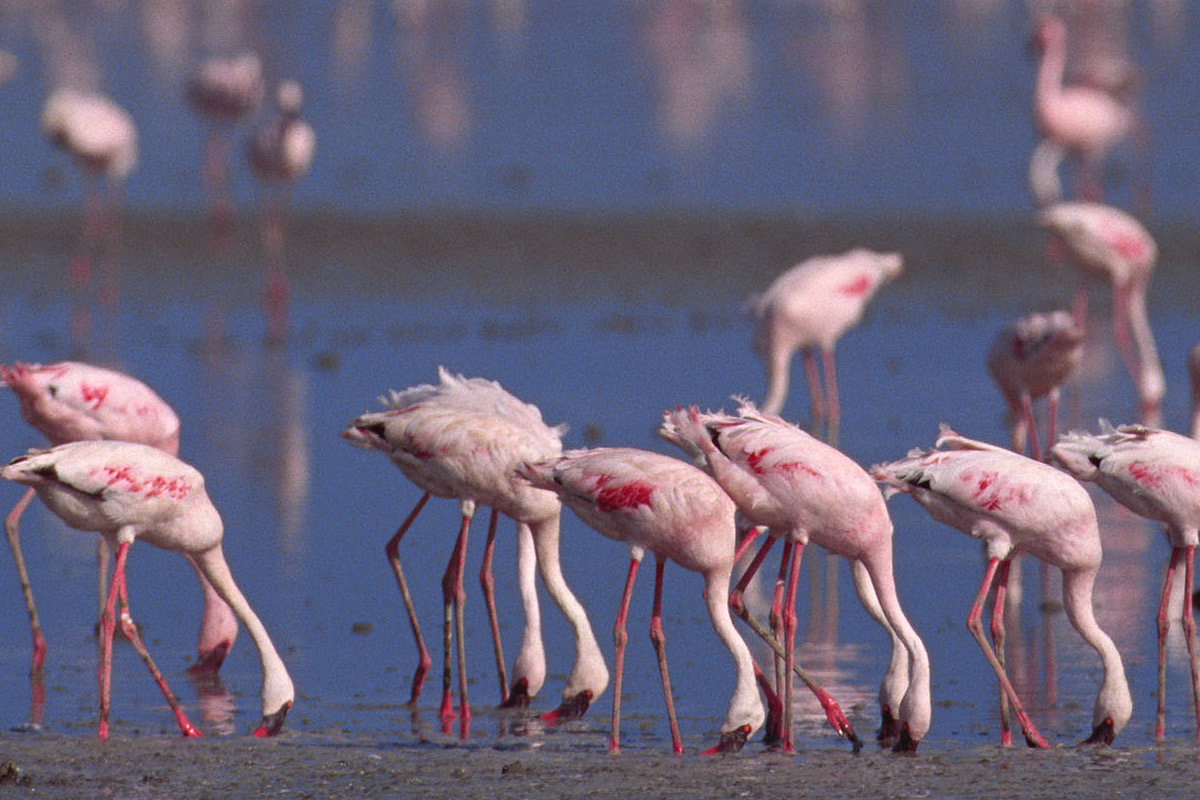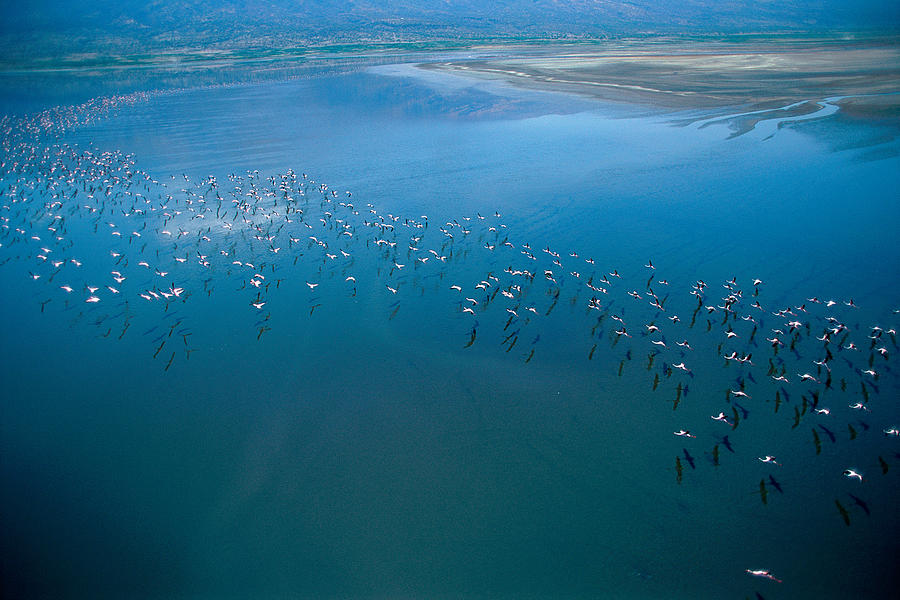
This superficially desolate land is incredibly ancient and dramatic. The unusual moonscape is an amazing unexplored adventure zone. The blue-green algae that thrive in this environment turn the lake an eye-popping red and orange and as it’s the lesser flamingoes favorite food, it is the most important breeding site for them in the world.

The majority of species can’t deal with the lake’s searing temperatures and high alkalinity, but a small type of tilapia (fish) and flamingos call it home. Sitting at the base of Ol Doniyo Lengai it is one of the most un-inhabitable and harsh environments on Earth.

The lake is fed by the waters from both the Ewaso Ngiro River and hot alkaline springs. Lake Natron is 57 km long, 22 km wide and less than 3 meters deep. About Lake Natron and Oldonyo Lengai Lake Natron If you are active you can even hike to the top in a long day-hike, well worth it for the stunning views from the top. Oldoinyo Lengai, meaning the mountain of God, forms a backdrop to this prehistoric looking area, or perhaps it is better to describe it as from out-of-this-world? The active volcano is pyramid shaped and looks like it is topped with ice or snow, but this is, in fact, white ash. The incredible redness of the lake, best seen from the air, the flamboyance of millions of flamingos in the breeding season, the hot springs ensuring there is still some water left in this vast lake, and the other plains animals (including wildebeest, zebra, oryx, gazelle and even the odd cheetah and lion) that can be found here, especially from December to April. So why would you visit? The harsh surroundings immediately show the origins of this place, but look beyond this desolation and you will see it. American White Pelicans (Pelecanus erthror-hynchos) are also summer inhabitants.Lake Natron, a very alkaline lake almost caustic which hardly supports any life. Over 188 species of birds 'hang out' and nest here including the Piping Plover (Chara-drius melodus), a small endangered shorebird. This lake serves as a significant staging, nesting and feeding area for Canada Geese (Branta canadensis), Tundra Swans (Cygna columbianus), and about 30 000 ducks. Redberry Lake (Saskatchewan) has been designated a World Biosphere Reserve by the United Nations Educational, Scientific and Cultural Organization (UNESCO). Another major staging and feeding area for migratory and shore birds is the Salton Sea which supports the greatest diversity of birds of any U.S. Mono Lake is also home to the second largest California Gull rookery in North America (Great Salt Lake is the largest). Mono Lake, California is designated an International Reserve in the Western Hemisphere Reserve Network with nearly 2 million waterbirds (including 35 species of shorebirds, e.g., Western phalaropes, American avocets, Western and Least sandpipers, Snowy plovers, White-faced ibises, Dowitchers) using it as a food and rest stop for at least part of the year. Both the greater and lesser flamingo (Phoenicopterus ruber and Phoeniconaias minor) are found at these lakes, with the lesser flamingo outnumbering the greater by 100 to one.


According to a recent aerial survey, Lake Natron has the highest concentration of flamingos in East Africa. Lakes Natron and Bahi, for example, have distinctively large populations of flamingos. The saline soda lakes of east Africa are renowned habitats for pink flamingoes. Saline lakes around the world are important nesting, feeding and staging areas for all types of waterbirds.


 0 kommentar(er)
0 kommentar(er)
